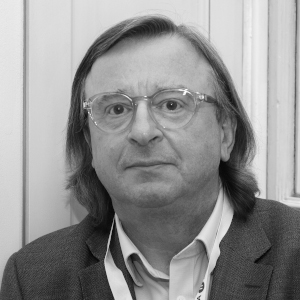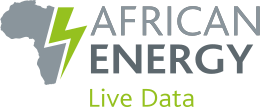Inauguration of the Soubré hydropower plant and Globeleq’s announcement of further work at Azito underline Côte d’Ivoire’s ability to raise funds from a variety of sources and deliver infrastructure schemes. Analysis of African Energy Live Data’s project pipeline suggests that President Ouattara’s drive to underpin post-conflict recovery with infrastructure investment could allow CdI to meet its target of reaching 4GW of installed capacity by 2020
Inauguration of the Soubré hydropower plant and Globeleq’s announcement of further work at Azito underline Côte d’Ivoire’s ability to raise funds from a variety of sources and deliver infrastructure schemes. Analysis of African Energy Live Data’s project pipeline suggests that President Ouattara’s drive to underpin post-conflict recovery with infrastructure investment could allow CdI to meet its target of reaching 4GW of installed capacity by 2020
The inauguration of the 275MW Soubré hydroelectric power (HEP) plant by President Alasane Ouattara on 2 November marked another step in Côte d’Ivoire (CdI)’s efforts to raise its installed generation capacity to 4GW by 2020. According to African Energy Live Data, the completion of the $653m Soubré plant, built by China’s Sinohydro Corporation and financed largely by the Export-Import Bank of China, has resulted in CdI’s installed on-grid capacity rising to 2,419MW; it stood at just 1,383MW in 2010.
Companies continue to announce investments. London-based independent power producer (IPP) Globeleq on 13 December announced that its 430MW Azito power plant would increase its combined cycle gas turbine (CCGT) generation capacity by around 30MW following implementation of technical improvements to increase efficiency and extend the lifetime of equipment.
Further analysis shows that on-grid capacity will reach 4,060MW by 2020, should the pipeline of planned projects be realised. This would exceed the government’s target for 2020 – the year following the next scheduled presidential election. Provided CdI maintains its levels of implementation, Live Data suggests 5,184MW of installed capacity will in service by 2022; this would be more than double the end-2017 figure.
The bulk of the generation capacity increase is being achieved through a combination of Chinese-developed HEP plants and privately-financed thermal projects. Ouattara has used skilled honed during his period as IMF deputy managing director, and international goodwill following the civil conflict that preceded his presidency, to mobilise finance and raise investor interest in a number of projects, some of which include a major transmission component.
No sooner had the Soubré plant been inaugurated than the foundation stone for the 112MW Gribo-Popoli (or Gripopopolié) HEP was laid 15km upstream on the Sassandra River. The New China News Agency (Xinhua) reported that Sinohydro would take 40 months to complete the Gribo-Popoli engineering procurement and construction (EPC) contract. The Chinese giant is also expected to build the 156MW Boutoubré and 280MW Louga HEP plants further down the Sassandra River. All of these projects are due online by 2022. A final dam in the Bas Sassandra region is planned at Tiboto, with 220MW capacity.
The 44MW Singrobo-Ahouaty HEP plant on the Bandama River, located 140km north of Abidjan, moved a step further to financial close after the African Development Bank (AfDB) on 7 December approved a $59m loan for the project, which already has support from Lagos-based Africa Finance Corporation and the Netherlands’ FMO. The project is being developed by a local start-up Ivoire Hydro Energy (IHE).
Thermal projects
A growth in domestic demand and concerns about existing production has given rise to gas supply issues, leading to the emergence of liquefied natural gas (LNG) import projects. In addition to the Globeleq upgrade, the government is still pushing the development of gas-fired IPPs.
The expansion and conversion to CCGT of both major IPPs that supply commercial hub Abidjan was completed in May 2015 for Compagnie Ivoirienne de Production d’Electricité (Ciprel) and in February 2016 by Azito Energie. Both Abdijan IPPs have further expansion projects planned:
● French investor Eranove Group has announced a new 350MW fifth unit at its Ciprel plant; this is expected online in two stages between October 2019 and June 2020; and
● phase four of Globeleq’s Azito plant is intended to provide a further 280MW of CCGT generation.
Preliminary construction work has started on the 372MW Songon CCGT plant, despite original partner Endeavor Energy taking local firm Starenergie 2073 to international arbitration over its decision to terminate their joint development agreement. Starenergie subsequently unilaterally awarded contracts to China Energy Engineering Corporation, Vinci Energies Côte d’Ivoire and Cegelec Maroc to deliver the project (AE 338/11). A decision on arbitration is expected in February 2018. However, the plant is still planned to come online in H2 2018.
The government is also promoting the development of other gas-fired IPPs, including a 370MW plant at Grand Bassam.
The Songon project partners sought to develop an associated 3m t/yr LNG import scheme to resolve gas supply issues. Despite the legal wrangling between Starenergie and Endeavor, the CI-GNL consortium signed an agreement in November 2016 to develop the LNG scheme, which is expected to be operational mid-2018. The CI-GNL group comprises Total (34%), state company PetroCi (11%), CI Energies (5%), Socar (26%), Shell (13%), Golar (6%) and Endeavor (5%).
LNG imports would significantly improve the energy mix. Almost one-third of CdI’s power is generated by a mixture of natural gas and back-up liquid fuel; advocates of LNG imports argue that the supply of adequate levels of natural gas should eradicate the need to burn costly and environmentally damaging diesel and heavy fuel oil.
17 cote charts-Dec17.png
The CdI energy mix in 2022
Should the pipeline of projects recorded by Live Data be realised, by 2022 over half of CdI’s power will be fuelled by natural gas, one-third from HEP and 14% from a 700MW coal-fired plant.
In a cautious opening to renewable energy (RE), the first solar and biomass projects are expected to be added to the mix, although these will only account for 1% and 2% respectively of total generation in 2022, according to the current Live Data pipeline. This could increase, if more of the RE developers now exploring the CdI market are successful.
Meanwhile, the two-by-350MW ‘clean coal’ plant is being developed at San-Pedro by the Broto IPP, a subsidiary of S.Energie (part of Snedai Group, headed by powerful local businessman and political player Adama Bictogo). Following contract signings with the government in 2016, the project’s first phase is expected online July 2020, with a second phase to be commissioned in July 2021. S.Energie is also committed to building a 321km 400kV transmission line to send power to Akoupé Zuedji in the Abidjan area. Snedai puts the total cost of the Broto IPP at €1.15bn ($1.34bn).
As it stands, implementation of the current Live Data pipeline would result in a considerable improvement to electricity supply. The population is expected to increase from 24.96m in 2017 to 28.38m, in 2022 according to the IMF’s World Economic Outlook 2017. As a result, on-grid electricity supply per capita will more than double from 0.086kWh in 2017 to 0.182kWh by 2022 – an impressive performance compared with many Sub-Saharan peers.
In-depth analysis of energy projects in Côte d’Ivoire will be published on 21 December in issue 360 of the African Energy newsletter.
NOTE: Data in this article is presented for public use, providing the figures are attributed to African Energy Live Data.
This article is authorised for republication with attribution to African Energy Live Data




